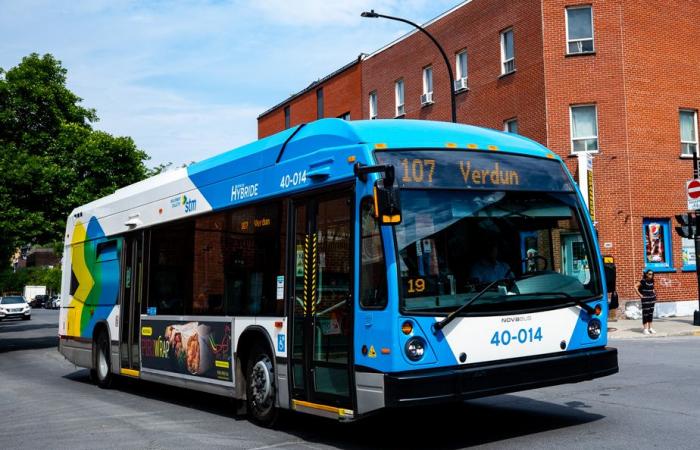
(Montreal) In terms of public transportation in Montreal, it is the snake that is biting its tail since the end of the COVID-19 pandemic, reveals a study from McGill University.
Posted at 12:07 p.m.
Laurie Trottier
The Canadian Press
This case study analyzed ridership and operation data from 169 bus lines transmitted by the Société de transport de Montréal (STM) in 2018 and 2022, in order to compare the changes – before and after – the pandemic.
It was produced by Ahmed El-Geneidy, professor at the School of Urban Planning at McGill University, and Paul Redelmeier, research assistant, and was published in the journal Transportation Research Record.
The first observation is that STM bus service ridership is no longer the same as before COVID-19. The most recent data from the STM, in 2023, reveal that ridership for its entire system is at nearly 80% of the pre-pandemic level.
Teleworking and the use of individual modes of transportation, such as the car or the bicycle, alerted researchers who decided to delve into the subject, indicates Meredith Alousi-Jones, who is part of the team of research. “We knew it was going to have an impact on the way people use public transportation, especially to go to work.”
The study demonstrated that elasticity, or the way users respond to bus service, has changed since the pandemic. “The same level of service, with the same budget, will not attract the same number of users,” explains M.me Alousi-Jones. We will have to put more budget into it and improve the service to attract the same number of users. »
According to the researcher, we should therefore not underestimate the impact that COVID-19 has had on daily transportation in large cities, which has led to a cultural change among users. The latter are also more sensitive to service drops than before the pandemic, even though these quickly produce a dissuasive effect. “People are asking for better service,” sums up Meredith Alousi-Jones.
Do more… with less
Thus, the researchers conclude that more investment is necessary for people to make the bus their favorite means of transportation on the island of Montreal.
Do more, and quickly, if we want to escape the vicious circle, since researchers believe that cutbacks “could trigger an infernal spiral and ultimately lead to a collapse of the transport system”, whereas these, caused by budget deficits, generate a drop in ridership, which then leads to other cutbacks.
Meredith Alousi-Jones believes that this collapse will not happen immediately, but that it is important to keep it in mind in order to find other sources of funding that can lead to an increase in service, rather than to a decrease.
The STM has been in financial crisis for several years. Last March, it announced an 85.6 million reduction in its spending, saying this would have no impact on its service offering.
In a press release published after the announcement of the 2024-2025 provincial budget, the public company denounced the government’s lack of commitment to the public transportation funding crisis and warned the Coalition Avenir Québec that “ it will not be possible to repeat this exercise of budgetary reductions on such a large scale in 2025.”
In this sense, the specialists affirm that their study constitutes a sort of call to action for political decision-makers with regard to public transport, so that they invest more to ensure its sustainability, in addition to promote long-term equity. They also suggest that the STM not cut frequent lines.
“Positioning certain routes as offering frequent service is a good way for transportation companies to make their system more user-friendly. In fact, users know that these lines are reliable and that they will not have to consult the schedules,” says Ahmed El-Geneidy, on the McGill University website.
In its 2023 report, the STM mentions that the 31 frequent lines alone account for more than 50% of current total ridership.
The researchers sent the results of their analysis to the STM, but believe they have received no response. As for itself, the transport company was not available this weekend to respond to a request for comment from The Canadian Press.
Now, the McGill University research team is working on a long-term study on the impacts of the Réseau express métropolitain (REM) on the health and well-being of Montrealers.





